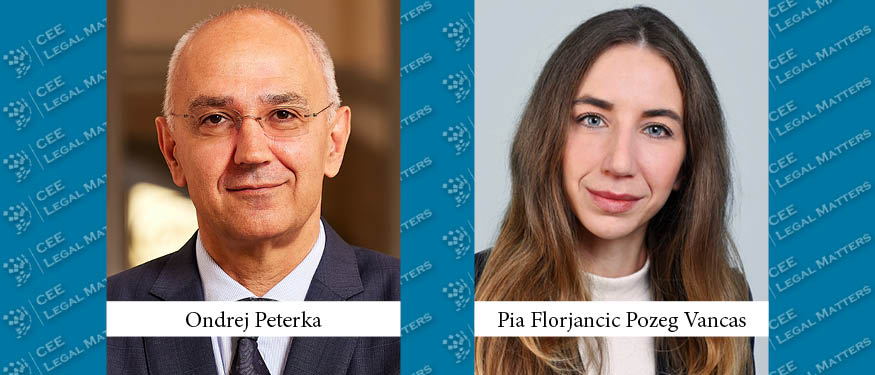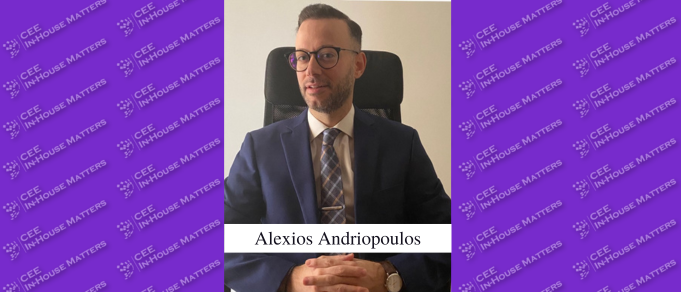While international private equity players still dominate blockbuster deals in CEE, locals and regional players are gaining more and more ground – especially in terms of volume. PRK Partners Co-Head of Corporate and M&A Practice Group Milan Sivy, Tuca Zbarcea & Asociatii Managing Partner Gabriel Zbarcea, and Avellum Managing Partner Mykola Stetsenko provide an in-depth analysis of the PE landscape in the Czech Republic, Romania, and Ukraine.
Emerging (Market) Opportunities
“Historically, international funds often brought substantial capital, expertise, and a global network of resources to the CEE market and have thus played a significant role in driving private equity activity in the CEE region, including the Czech Republic,” Sivy says. According to him, the key lure was the region’s “potential for growth, emerging market opportunities, and favorable investment conditions.” Still, things have changed in recent times.
“In the last decades, the regional private equity ecosystem has matured and local funds have gained a considerable share in the pipeline within the Czech Republic and the broader CEE region,” Sivy continues. “Local funds have demonstrated an increased level of sophistication and professionalism as well as a deep understanding of the local market dynamics, cultural nuances, and regulatory landscape – which can give them an advantage in identifying attractive investment opportunities and navigating potential challenges.” Moreover, he reports that “these funds are also often backed by local institutional investors, development banks or successful entrepreneurs who have experienced business growth in the region.”
Zeroing in on these funds’ attention, Zbarcea says that in Romania, it has been “dominated by the ICT, medical services, consumer goods, and agribusiness sectors. Green energy and sustainability are also high on the private equity funds’ agenda and ESG will likely play a more prominent role in their investment decisions over the coming years.”
Local and Regional Funds Taking Charge
“In the Czech Republic, deal activity appears to be driven mainly by local and regional private equity funds, capturing the majority of the mid- and small-cap transactions while international players focus on a smaller number of larger transactions,” Sivy reports. “Recent years have shown an increase in the investment activity of local/and regional private equity investors in the CEE region while international private equity funds still demonstrate a strong presence when it comes to upper mid-cap and large-cap transactions,” he adds. “Nevertheless, the division of the market between local/regional private equity investors and their international peers has been rather stable over the years, and is expected to remain stable in the medium term.”
The situation is similar in Romania. “The most active private equity funds in the Romanian market in the past few years have been the local and regional ones, with several notable exceptions, such as recent new market entries of Macquarie Infrastructure and Real Assets, and Novalpina Capital,” Zbarcea notes. “Overall, the Romanian private equity industry lags behind other CEE markets, despite a growing number of funds active locally.”
In Ukraine, Stetsenko reports that local and regional funds have definitely been the leaders. “Horizon Capital is the most prominent example, having invested more than USD 1 billion over the last 20 years,” he says.
Size (Still) Matters
However, matters are different with big-ticket items. According to Sivy, this is the primary differentiator that swings the pendulum towards internationals. “Generally speaking, local funds have focused more on small- and medium-sized deals, while larger transactions, for example, in excess of EUR 200-300 million, have been mostly conducted by international funds,” Zbarcea also notes.
“Local and regional private equity funds tend to focus on small- and mid-cap targets and transactions, as I mentioned,” Sivy adds. “As an interesting trend, in recent years in the Czech Republic, these included also some small family businesses addressing succession questions as well as independent functioning units in large corporations (capable of operating on their own) which do not fit in a corporation’s general development strategy.”
On the other hand, the international funds keep on “conducting the largest transactions in the region,” Sivy continues. “When speaking about the Czech Republic, these recently included AnaCap’s sale of Equa Bank to Raiffeisen Bank International, acquisition of Stock Spirits (including its Czech subsidiary) by CVC Capital Partners, and recent acquisitions of Meopta – Optika and Tescan Orsay Holding by the Carlyle Group. All of them ranked among the largest transactions in the Czech Republic in their respective years,” he explains.
In Romania, things are even more international. “Most of the funding sources are still coming from international financial institutions, the likes of the European Investment Fund, the EBRD, or the International Finance Corporation,” Zbarcea says. According to him, this means that “Romania lacks a more diversified range of fundraising options, such as corporate investors, pension funds, other asset managers, and sovereign wealth funds. According to some studies, only 0.02% of Romania’s GDP is represented by private equity investments as opposed to 0.7% of GDP at the EU level,” he explains.
Risky Business
While the Czech Republic is both part of the EU and NATO, which “provides guarantees of political, economic, and legal stability that other emerging markets lack,” per Sivy, all is not smooth sailing. “Despite a decade of growth, private equity fundraising in the CEE region has not matched the global boom,” Sivy adds. “Investments in private equity in CEE, as a percentage of GDP, remain behind international benchmarks, for example, when compared to Western Europe.” In addition, he says that the “relative geographic proximity of the Czech Republic and the CEE region to an ongoing conflict in Ukraine can be a bugbear for risk-averse international investors.”
In Ukraine, given the current context, Stetsenko reports that “international funds have mostly exited their investments.” According to Stetsenko, the “absence of their presence in Ukraine has led to poor investment oversight and often bad investment decisions.”
Furthermore, when it comes to the very way the deals are structured, Sivy highlights differences in approach indicative of how funds perceive risk profiles. “When private equity is on the sell-side, both international and local funds appear to have a strong preference for employing warranty and indemnity insurance, often together with other relevant insurance products, depending on the specifics of the transaction. Although the use of transactional insurance has become increasingly popular in recent years among local funds, it might still not be as obvious a choice as it is in the international context,” he says.
“Also, in this context, when it comes to the liability for representations and warranties stipulated in the transaction documents, even when the warranty and indemnity insurance is employed, some of the international private equity funds might tend to shift the potential liability to the management of the target by proposing that the target’s top management members (as natural persons) are party to the transactional documents and are giving the business representations and warranties instead of the seller,” Sivy explains. “This approach is not common in local transactions.”
Whether it is driven by local funds growing or the evolving risk profile of the region discouraging internationals, according to Zbarcea, local-based private equity has “become more active in recent years, with this trend likely to continue over the following years.”
This article was originally published in Issue 10.6 of the CEE Legal Matters Magazine. If you would like to receive a hard copy of the magazine, you can subscribe here.

























